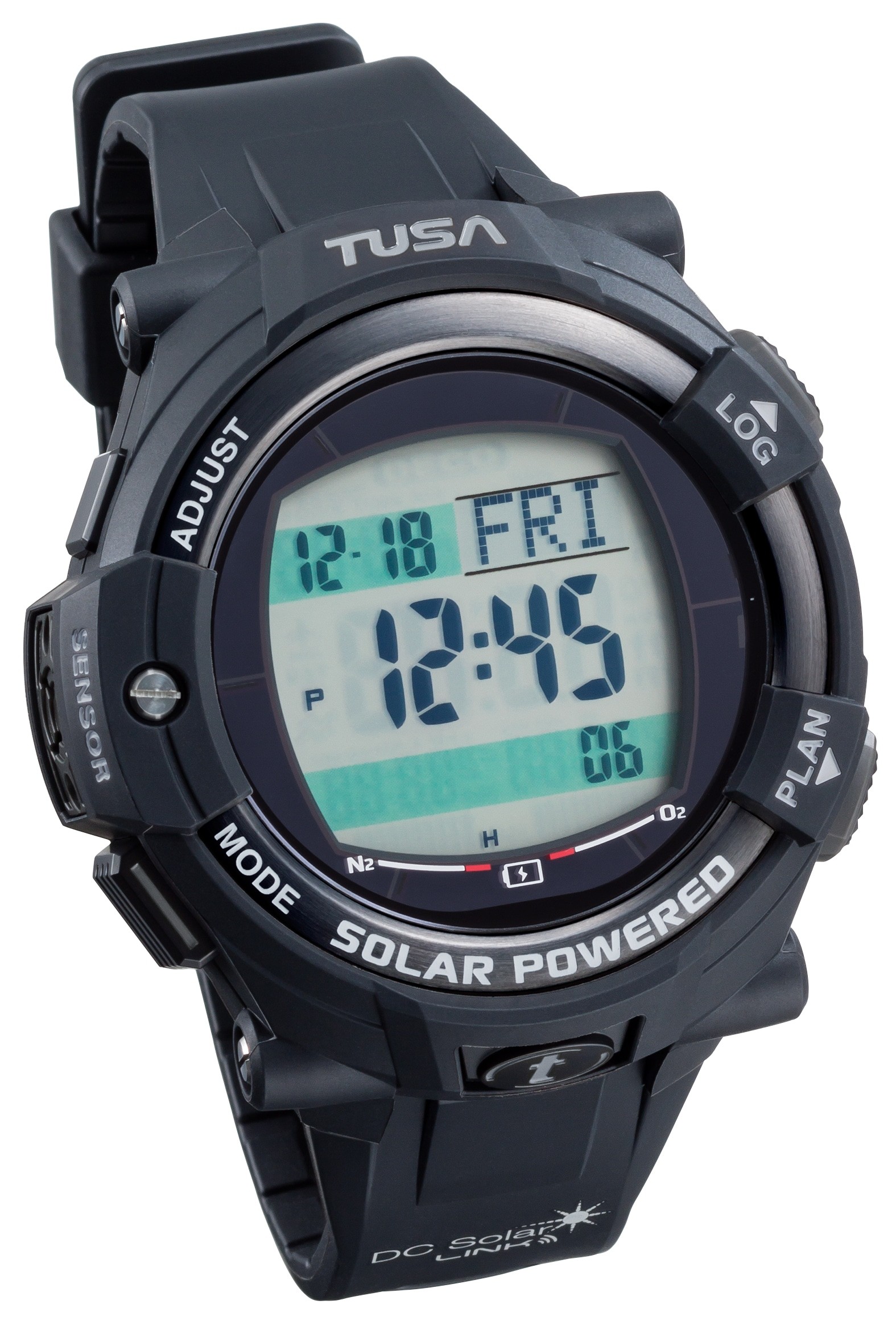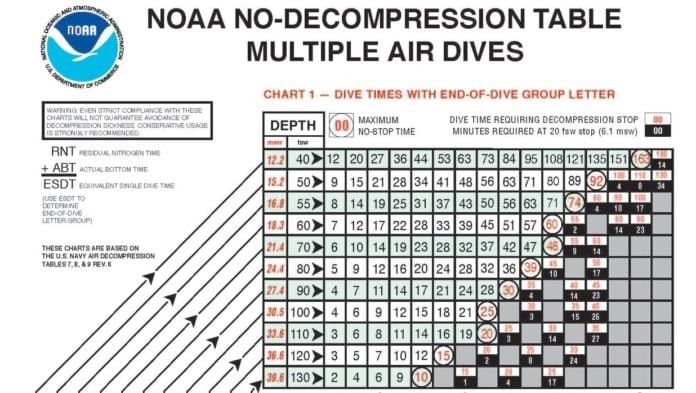Dive computers are firmly in place as a must have portion of a dive kit. The prices of entry level dive computers are such that they can be one of the least expensive items you have. The question that comes to mind is what is the future of the dive tables?
The recreational dive tables and the modern dive computer exist to reduce the risk of decompression illness (DCI). In the early days of recreational diving, the rate of decompression sickness (DCS), one of the two forms of DCI, was very high. Commonly called the bends, it was a condition that most divers at that time accepted as a given they would eventually get it. Divers started to use the dive tables that the US Navy had developed over the years. As the sport of diving evolved and accreditation agencies appeared, those tables were modified to reduce the risk. The navy’s tables were designed with a compromise between scuba divers and surface supplied air divers. They also considered operational requirements which meant that a percentage of divers experiencing DCS was acceptable. These conditions did not exist for the recreational diver. As science improved additional modifications to the tables were made to further refine the process and reduce the risk that divers face.

The dive computer has its base in the recreational dive tables. Dive tables give a diver a maximum time a diver can stay at a given depth, this is called the No Decompression Limit (NDL). When a diver plans a second dive, the dive tables helps them determine the degree of nitrogen saturation remaining in their body. This is included in the calculation to determine how long you can stay at a given depth on the next dive. Our body always have a certain amount of nitrogen in our tissues and other portions of our bodies. While under increased pressure the body will absorb more nitrogen than at the surface, Henry’s law. The rate it absorbs at increased pressure and releases when the pressure lowers differs with different tissues. These rates are refer to as halftimes, and are based on calculation on how long it will take to decrease one half of the nitrogen in the tissue, blood or fluid until it equals the surrounding nitrogen content.
A dive table will give you the maximum time for the tissue effected the most. Without getting too technical, the dive computers takes the pressure and amount of time at the depth and tracks the effect over a number of different tissue types and returns the conditions of the one having the greatest impact. Clearly this process is more accurate than the dive tables calculation and the assumption you will dive at one depth. The dive computer uses algorithms and real time dive data to track anywhere from 9 to 12 halftimes each between 4 minutes and 200 minutes. The computer then updates the display with the NDL as it happens. If you plan a dive to 30 meters you can stay for 19 minutes. When you dive that on a computer it will increase the time if you do not stay the entire time at 30 meters. It should also be noted that dive computers use different algorithms resulting in different solutions for the identical dive.

However, if the nitrogen level is not an issue, such as a shallow dive where the air supply is the limiting condition, then the difference between the tables and the dive computer does not matter.
What is the future of the dive tables?
The “proper” use of a dive computer does support a case for better risk management. Mandatory use of a dive computer is becoming more common either by local regulations or dive center policies. Most liveaboards require this as well. This leads divers to believe that the computer solves the problems. The availability of dive computers and their advantages has lead some training agencies to offer an option of not teaching the dive tables.
Many experienced divers, including instructors, feel that this is wrong. I recently was with a group of dive instructors and we were discussing problems they had with newly certified divers who did not seem properly trained. The conversation came around to the topic of dive tables. The general consensus was that the majority of newly trained divers did not appreciate the risk involved in diving and were 100% reliant on the dive computer. The view expressed by the group was that training the dive tables reinforces the principals needed to understand the risk at depth.
When we look at a dive table it is easy to see how time and depth relate to each other to create the NDL. We do not need to fully understand the mathematics behind the charts but we do get an understanding of the relationship. As a student takes each step of preparing a dive plan using a table, the concepts of nitrogen saturation are reinforced. When they start the planning on the second or even third dive of the day the charts will illustrate how and to what degree the earlier dive will impact the following dive, it also shows the impact that the surface interval will have on the following dive. This concept of residual nitrogen and surface interval is not easy to see using the planning function of a dive computer. My dive computer planner will tell me how long and deep I can dive on my follow up dive in real time but not show me the added dive time I will get if I wait a little longer.
Divers for decades used the recreational dive tables successfully, and many still dive without a computer. Understanding the dive tables also means that you can still dive if you forget your computer or it fails before you dive. From my viewpoint, the most important point of teaching the dive tables to computer users is so they understand the risk the dive computer is helping them to manage.

